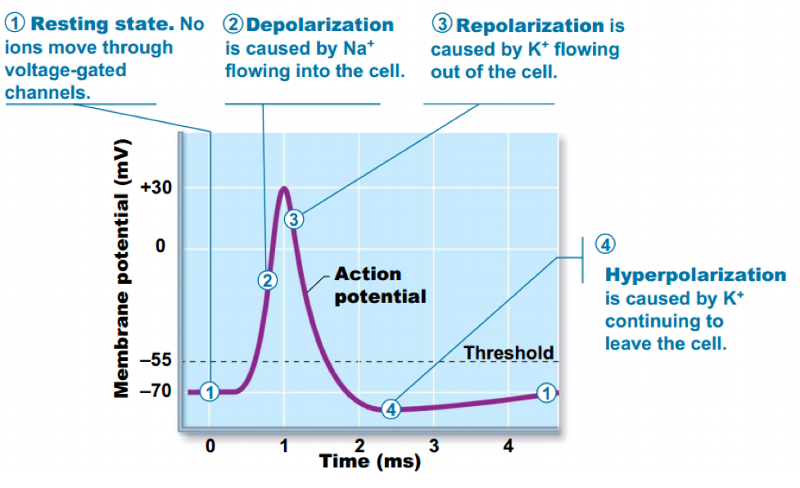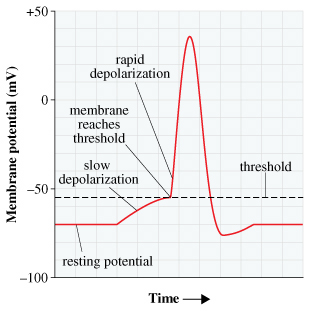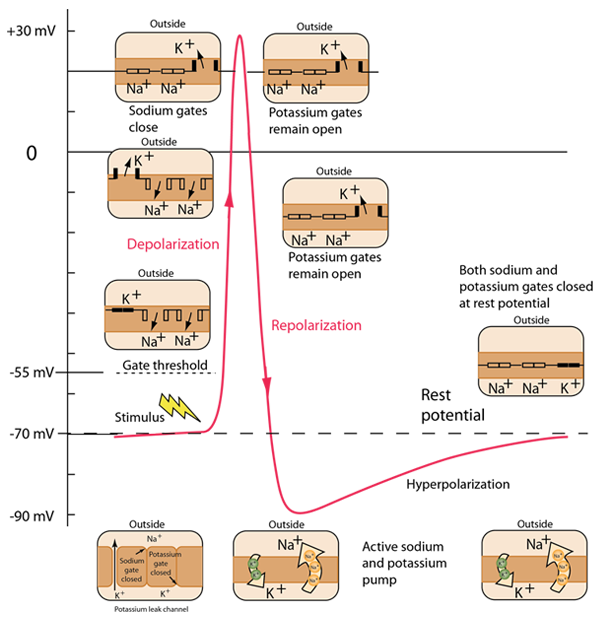

The worksheet (Appendix 2) was formulated by the course coordinator in the traditional style with written questions to be answered after exchanging ideas with their student peers and with help from the tutor. Activity for the Comparison Group Students in the comparison group were allowed to work as in an ordinary tutorial session in groups of 3-4, with an on-paper worksheet and tutor.
ACTION POTENTIAL GRAPH SERIES
The final question of the series guided the students to create the whole action potential phenomenon on the graph window by changing all the parameter values using the five sliders (Fig. Students were given scaffolding questions to answer while working with the simulation. By interacting with the simulation through these sliders, the students develop knowledge about the association between the parameter values and the membrane potential.

Students can move the sliders to change the parameter values such as number of sodium or potassium channels and time taken before closing or opening of a particular ion gate (close delay and open delay respectively). In the left-hand window there is a graph representing the membrane potential generated by the parameter values presented on the sliders in the right-hand window.

Figure 3 is an example of the appearance of the simulation when it is being used. 2a) incorporated three explicit representations, colour-coded circles representing individual ions in location with respect to the membrane, on-screen labelled values representing the concentration of the two types of ions on either side of the membrane, and a graph of the resulting membrane potential over time.
ACTION POTENTIAL GRAPH SOFTWARE
The interface used for presenting the simulation was SLBi software (, accessed ), which allows students to work with multiple windows providing commentary and to view changes in the different representations. The simulation was developed in the L-studio modelling environment (available from, accessed ), which provides a rules-based modelling language with graphical and interaction support ( Prusinkiewicz et al. The initial state has more potassium inside the cell and more sodium outside the cell. The environment is divided in two by the cellular membrane, with environmental states based on the number of sodium (blue dots) and potassium (red dots) ions present on either side. The activity of each component depends on its internal state and on the state of the environment around it. An agent-based modelling approach was used, with individual sodium and potassium ions and associated voltage-gated ion channels represented explicitly. The simulation was designed by one of the researchers, Jim Hanan, in conjunction with the course coordinator to ensure that it was consistent with the content of the course, the assigned textbook and lecture information. Through observation of the changes in the dynamics of the system after setting parameters, students could learn and quantify how the settings they made affected the shape of the graph of membrane potential (see Fig.

During different phases of the activity, students could change a selection of the parameters available, depending on the concept they were addressing. Similar to the usual worksheet-based tutorial session, the students in these groups developed understanding about the process through discussion about task-specific questions (Appendix 1) while interacting with the simulation. for the Experimental Groups Students in the experimental groups were asked to work in groups of three with the simulation modelling action potential under the guidance of the tutor.


 0 kommentar(er)
0 kommentar(er)
